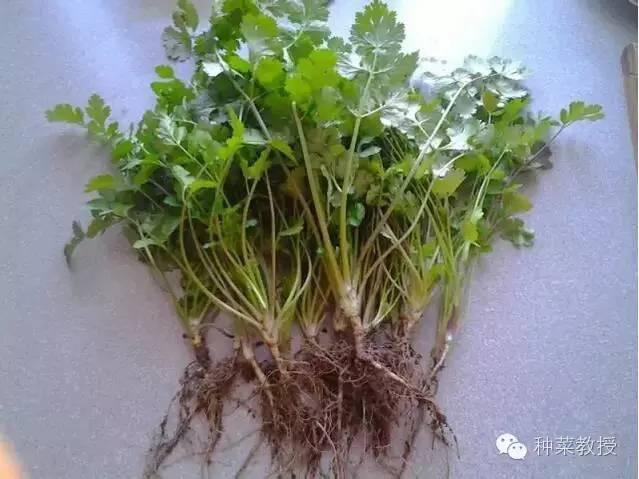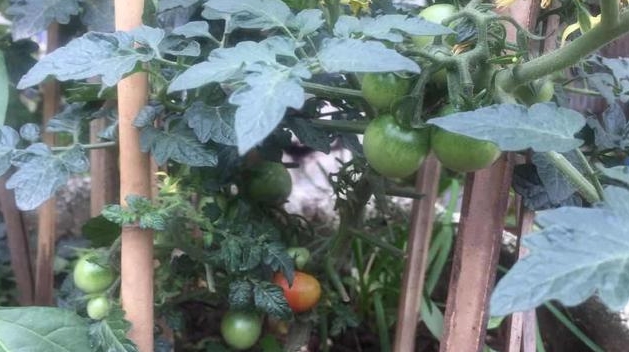What do you plant and what do you die? These 10 kinds of vegetables, sowing "seeds" are alive, no need to raise seedlings, especially suitable for novices to plant, and the balcony can also have a good harvest
Novice growers can't escape the curse of "seedlings die in batches, transplant half die"? In fact, you don't need to work hard at all! Many vegetables are born with "skin", and when the seeds are sprinkled into the soil, they can sprout and grow with a little water, and they can bear a big harvest in small pots on the balcony. Today, Pan Mi Rice will give you an inventory of 10 kinds of "lazy-friendly" vegetables, along with planting techniques that are easy to learn, and you will be sure that you will dare to start after reading it.
1. Chicken cabbage: 30 days harvest of "instant vegetables
To say that the first choice for novices to get started, no one dares to recognize the first place. Its seeds are like millet grains, sprinkled on the surface of the potting soil, covered with a layer of 0.5 cm thick thin soil, watered with water and placed in astigmatism, and tender yellow bud tips will appear in 3-5 days.
Chicken cabbage seeds do not need to be "covered" to germinate, just like people need air to breathe, and too thick soil will suffocate the seeds. When the seedlings grow to 2 true leaves, the spacing should be widened like a seat for children, leaving a gap of 2-3 cm for each plant, otherwise they will grow and become thinner when crowded together. It can be pinched and eaten in about 30 days, and it can grow another stubble after cutting.

2. Chives: "circular vegetables" that can be alive by inserting them into the soil
When buying green onions, leave a few roots with whiskers, insert them directly into the pot soil, and water thoroughly to live; If you find it troublesome, grab a handful of green onion seeds and sprinkle them in, and thin out the seedlings after emergence. It is drought tolerant and shade-tolerant, and you can put it in the corner of the balcony, pinch a few when cooking, and the more you pinch it, the more vigorous it will grow.
The root system of the chives is like a "mini beard", the ability to absorb water is weak, and watering should be "small and many times", just like feeding a small baby, feeding too much at one time is easy to choke, just moisten the soil every time.

3. Shepherd's purse: "natural wild vegetable replacement" in autumn and winter
Shepherd's purse seeds are as fine as dust, and the seeds can be sprinkled more evenly when mixing with fine sand, and the soil only needs to be covered with a thin layer, almost not seeing the seeds, and the seedlings will emerge 7-10 days after watering thoroughly. It is more resistant to barrenness than spinach, can be planted in ordinary garden soil, and grows more tender in low temperatures in autumn and winter.
Shepherd's purse is a typical "low-temperature vernalization" plant, just like it needs to go through the cold of winter to "awaken" the best taste, when the temperature is below 10°C, it accumulates more amino acids and tastes sweeter than the one grown in summer. And its leaves grow close to the ground, so there is no need to be afraid of lodging, and novices don't have to worry about supporting seedlings at all.
4. Lettuce: "regenerated vegetables" that cannot be eaten by breaking the leaves
Lettuce seeds are very small, so you can mix them with fine sand when scattering them so that they are spread more evenly. Cover the soil with 0.3 cm, keep the soil moist, and the seedlings will emerge in about a week. When the leaves grow to 10 cm, start to break and eat from the outer layer, and the leaves inside will continue to grow and can be eaten for several rounds.
The water content in lettuce leaves is as high as 95%, like a "small reservoir", but the root system is shallow and the water storage capacity is poor, so it cannot lack water, and the soil surface should be watered when it is dry, otherwise the leaves are easy to wilt and yellow.
5. Lettuce: a "brother dish" that is better than lettuce
Lettuce and lettuce are "relatives" and are grown in a similar way, but are more skiny than lettuce. Seeds are scattered in the soil, planted directly without soaking seeds, keeping the soil moist after emergence, and can be harvested in 25-30 days. It is not afraid of the sun, and it is most suitable for planting in a well-lit place on the balcony.
6. Bok choy: a "starter dish" with zero failure for novices
Cabbage seeds can be sown or sown, covered with 1 cm of soil, and seedlings will emerge 5-7 days after watering thoroughly. It is not picky about the soil, ordinary garden soil can be planted with a small amount of leaf mulch, and it can be harvested when it grows to a height of 15 cm, and the taste is sweet.
Bok choy is easy to grow "tall seedlings" in the seedling stage, that is, the stems are thin and long, because of insufficient light, just like people expect to become weak in the house. Just move it to a well-lit place, and the stalk will become thicker and grow healthier.
7. Amaranth: heat-resistant and humid-resistant "summer greens
Amaranth is the "darling" of summer, and the higher the temperature, the better it grows. Seeds are scattered in the soil, covered with 0.5 cm of soil, kept moist and emerged in a week. Its color is red and green, it is very fragrant when fried, and there are few pests and diseases, and there is almost no need to spray it.
Amaranth leaves contain "anthocyanins", which are like natural "dyes", so red amaranth will lose color when fried. This substance is very nutritious and keeps amaranth from getting sunburned in bright light, like putting a layer of "sunscreen" on the leaves.

8. Water spinach: a "universal dish" that can live in hydroponic soil culture
Water spinach can be soil cultivated or hydroponically, scattered in the soil during soil cultivation, cover the soil by 1 cm, water and moisturize; Hydroponics is simpler, scatter the seeds on a foam board, float on the water, and grow roots and emerge in about a week. It grows fast, can branch after pinching the top, and can be harvested continuously.
Even if its stems are cut off and inserted into the soil, as long as there is water, new roots can quickly grow and survive, which is why it is so easy to reproduce.
9. Chrysanthemum: a "deworming vegetable" with its own fragrance
After sowing, cover the soil with 1 cm, water thoroughly, and emerge in about 10 days. It has a special fragrance that repels pests such as aphids, and the planting process is almost unnecessary. Harvest when it grows to a height of 20 cm, leave 3 cm of stalk when cutting, and grow another stubble.
The fragrance of chrysanthemum comes from "volatile oil", which is like a natural "insect repellent", and pests will avoid it when they smell it, so it is rarely a pest infestation when planted chrysanthemum. And this volatile oil will be richer when heated, so chrysanthemum shabu-shabu and stir-fry are particularly fragrant.
10. Radish seedlings: "sprouts" harvested in 7 days
Radish seedlings are the fastest vegetable to eat, sprinkle the radish seeds in a tray lined with wet wipes, cover with a lid to moisturize, water once a day, and grow to 10 cm tall in about 7 days.
Novice growers should not be greedy for complications, start with these 10 kinds of vegetables that "sow seeds and live", and watch the seeds germinate, grow leaves, and harvest, and be full of a sense of accomplishment. Even if there is only a few pots of space on the balcony, you can achieve "vegetable freedom", so hurry up and try two!
欢迎关注微信公众号:泛米米的小菜园
12本阳台种菜电子书限时免费送
关注【泛米米的小菜园】,发送“电子书”免费获取
随时随地在手机上学习交流阳台种菜
这篇文章出自 fanmimi 如需转载请注明出处;
这篇文章的地址:http://fanmimi.com/2025/587.html
本站部分资源收集于网络,纯个人收藏,无商业用途,如有侵权请及时告知!
 盆栽香菜种植方法全图解—【种菜教授】【阳台种菜全图解系列】
盆栽香菜种植方法全图解—【种菜教授】【阳台种菜全图解系列】 原厂彩包蔬菜种子免费领,30种蔬菜种子任选
原厂彩包蔬菜种子免费领,30种蔬菜种子任选 生姜阳台盆栽种植方法
生姜阳台盆栽种植方法 茄子阳台盆栽种植方法
茄子阳台盆栽种植方法 菠菜阳台盆栽种植方法
菠菜阳台盆栽种植方法 节瓜阳台盆栽种植方法(毛瓜、北瓜阳台盆栽种植方法)
节瓜阳台盆栽种植方法(毛瓜、北瓜阳台盆栽种植方法) 阳台盆栽番茄种植方法,盆栽番茄(西红柿)各种问题解决方法合集
阳台盆栽番茄种植方法,盆栽番茄(西红柿)各种问题解决方法合集 芥菜阳台盆栽种植方法
芥菜阳台盆栽种植方法